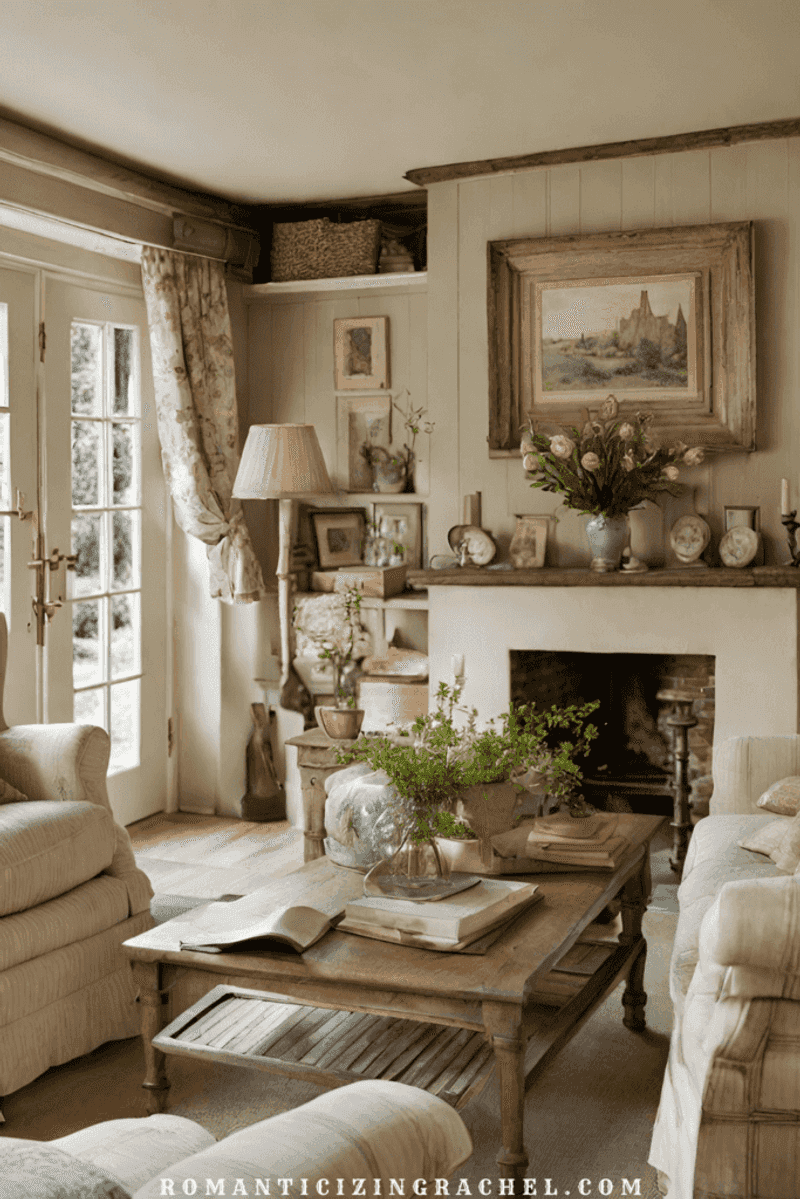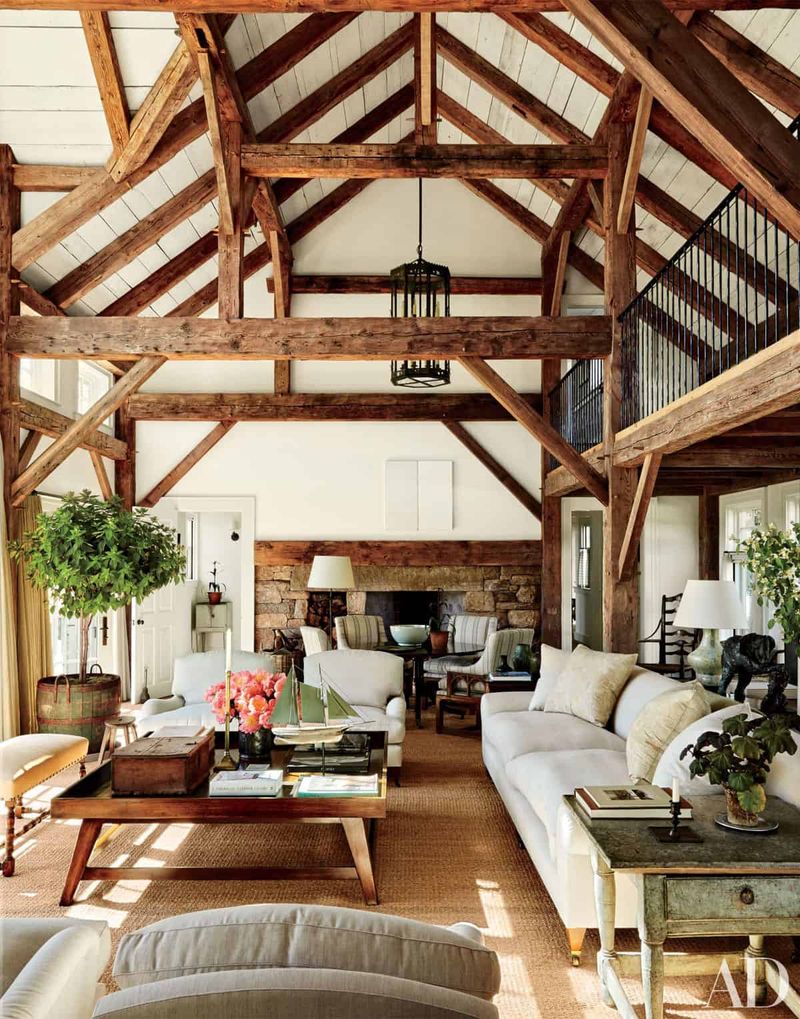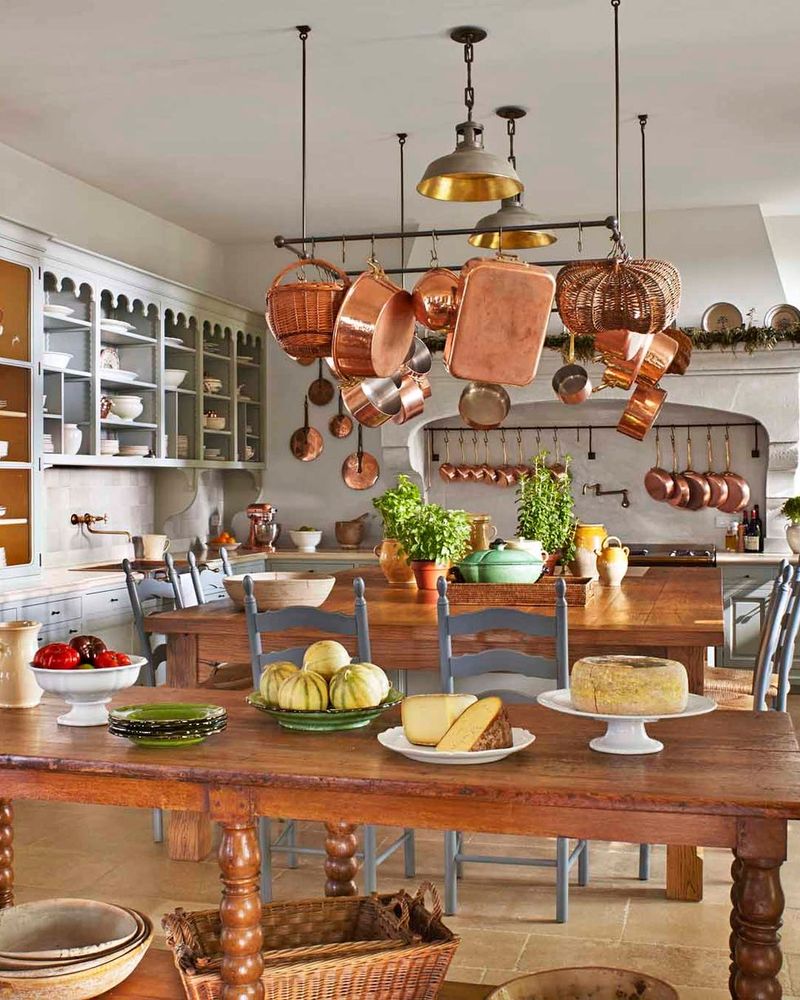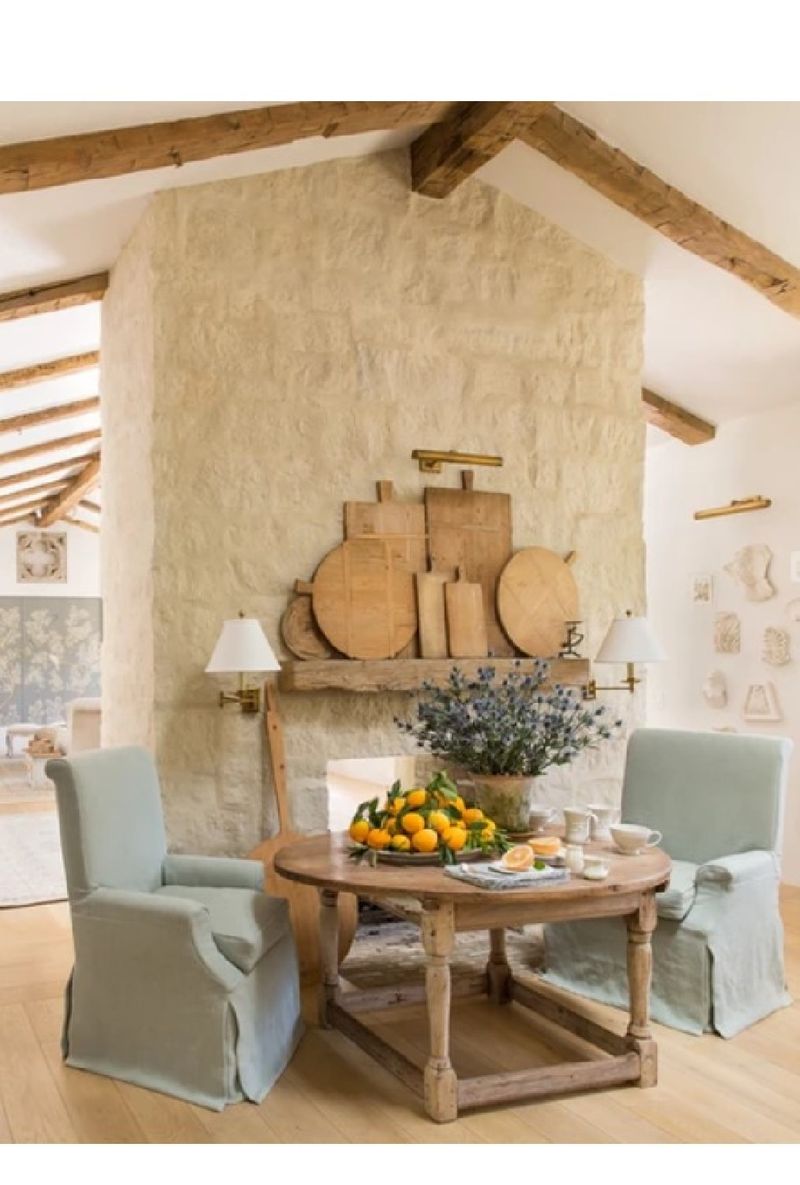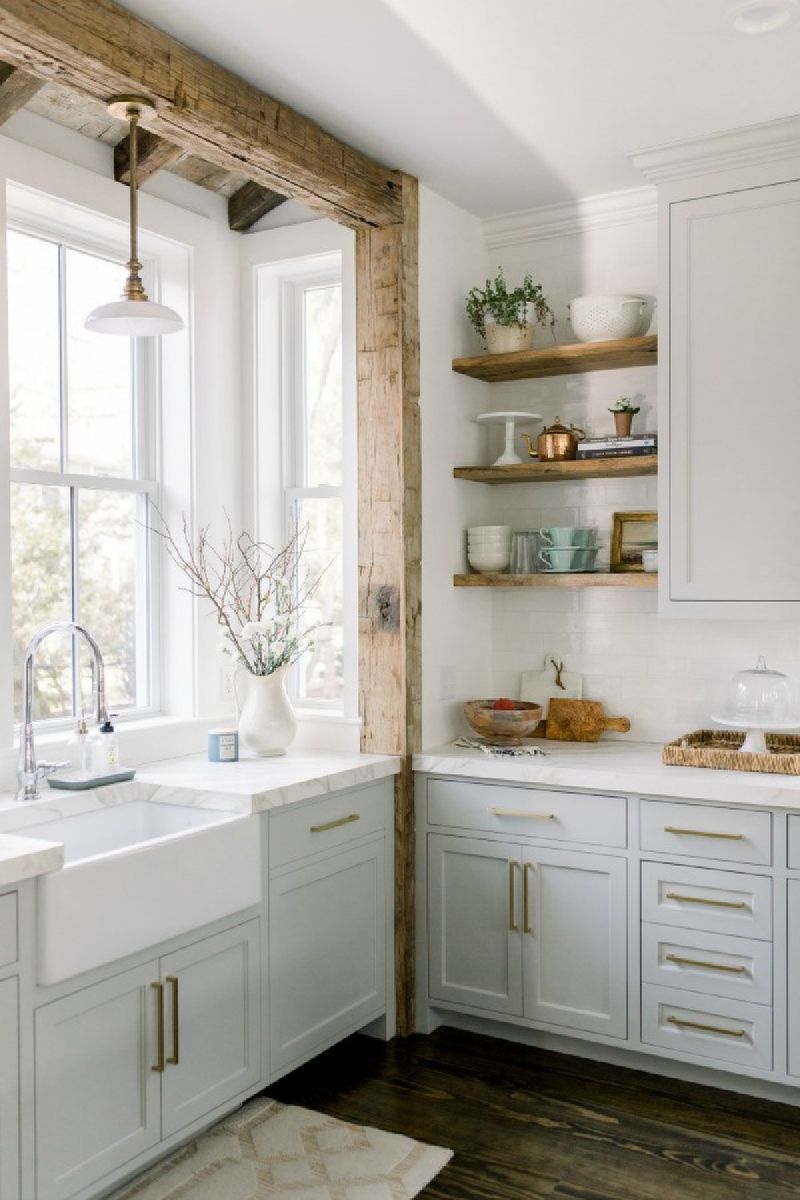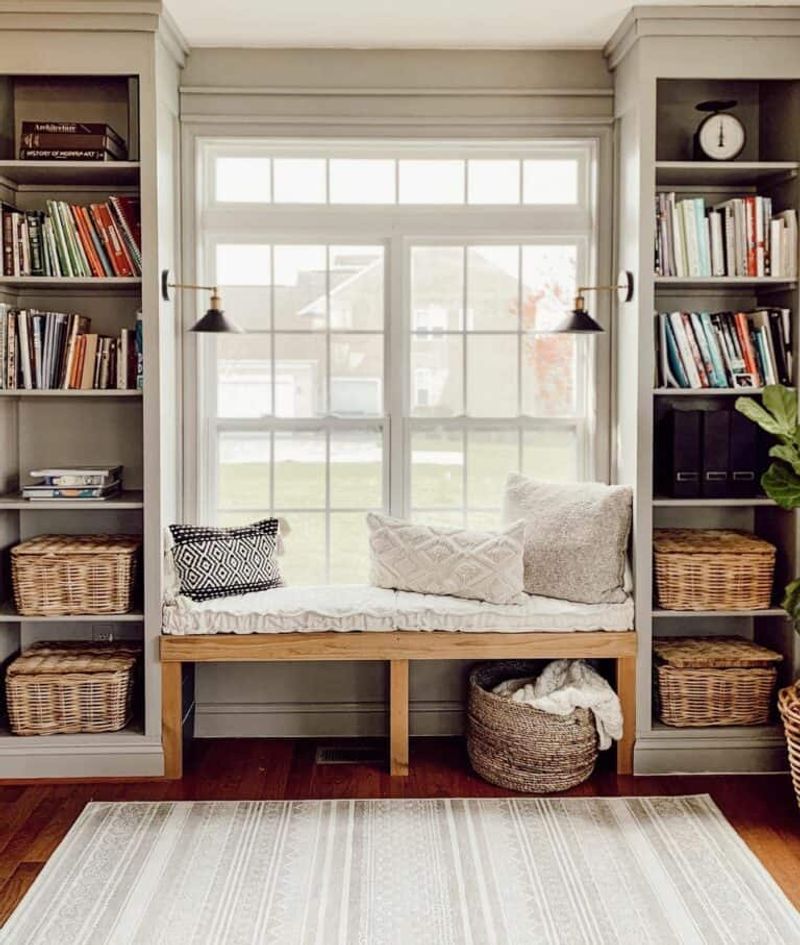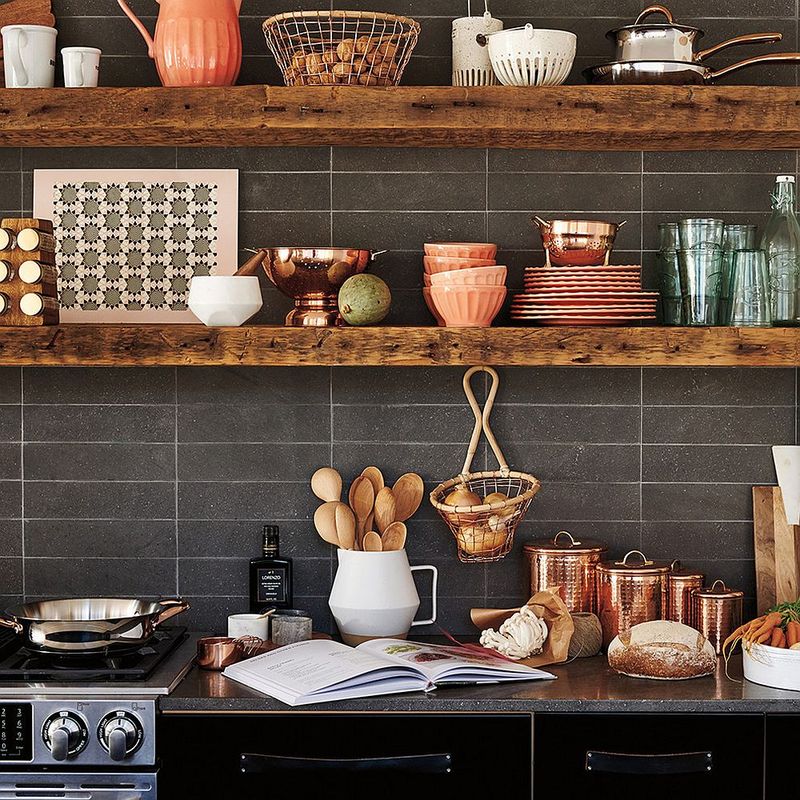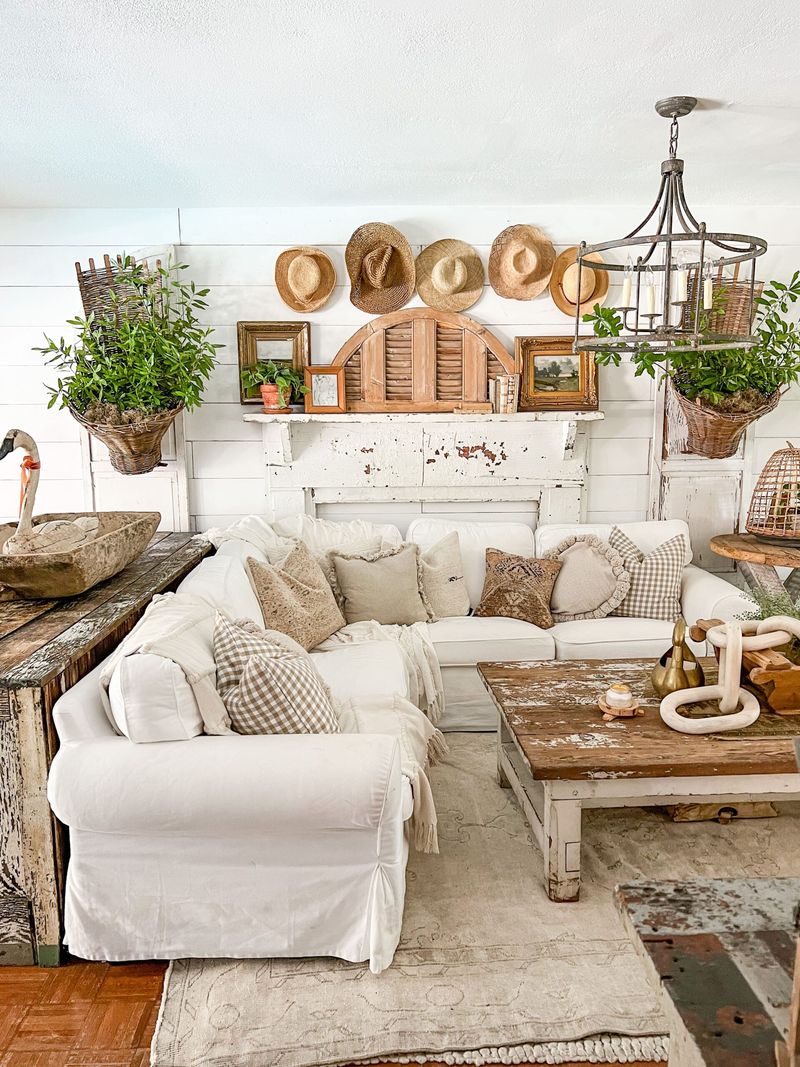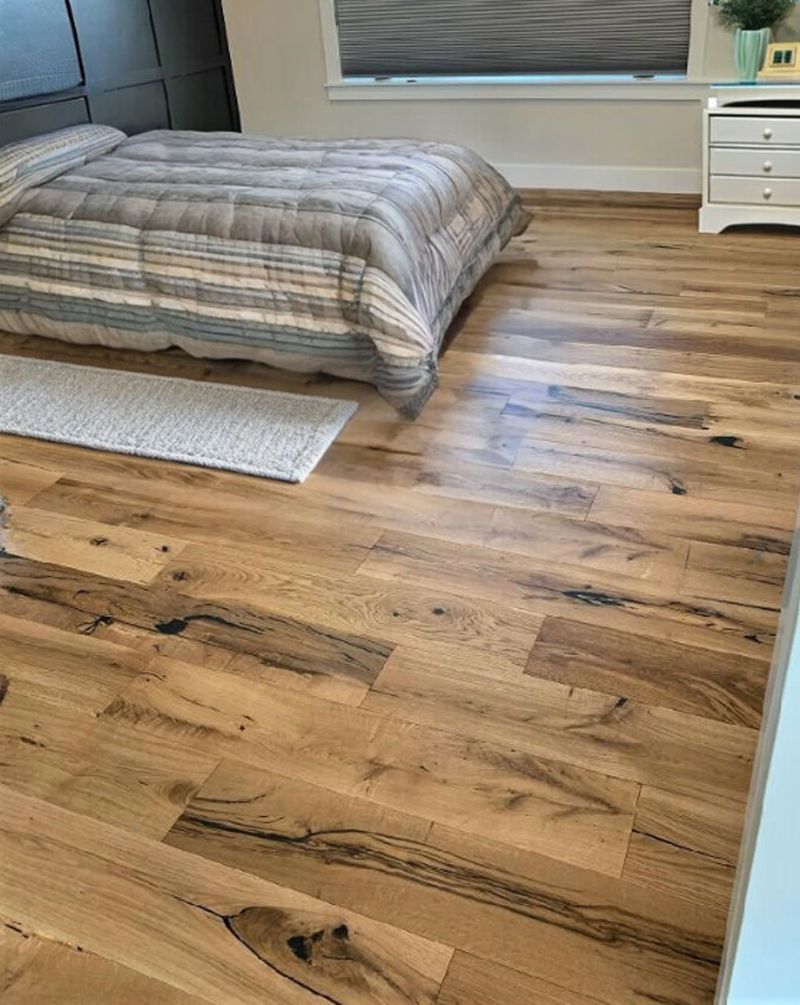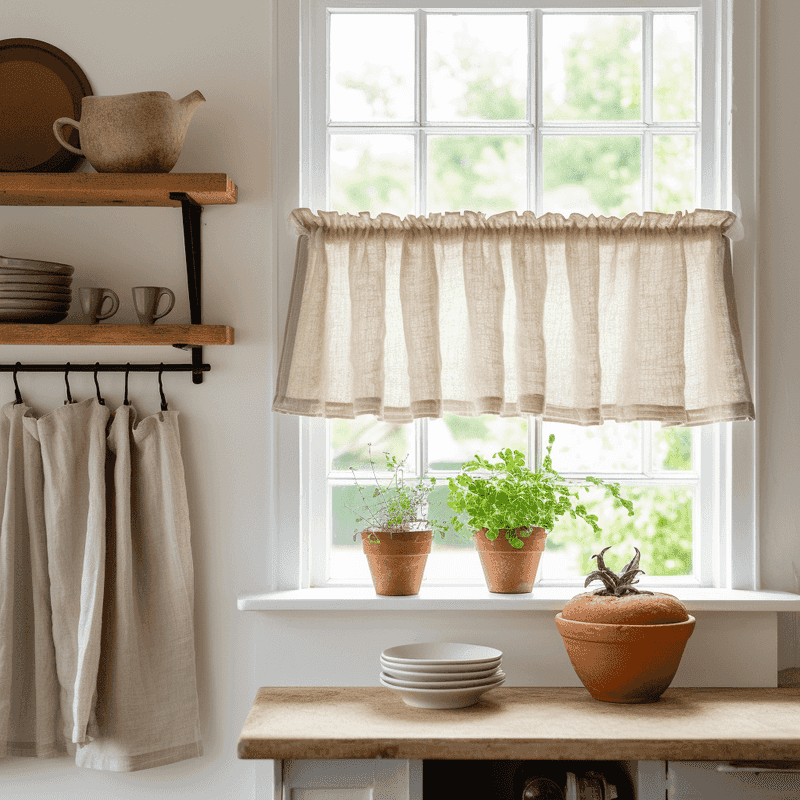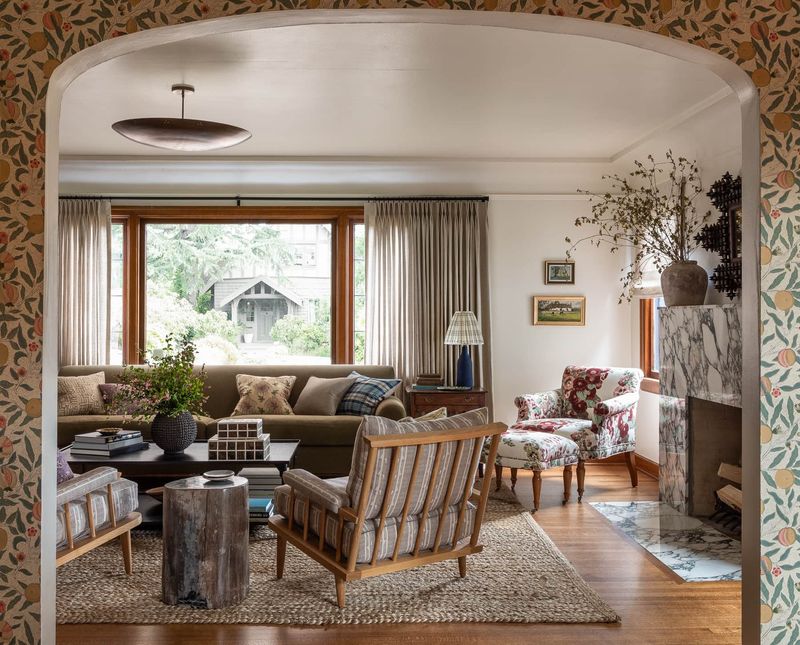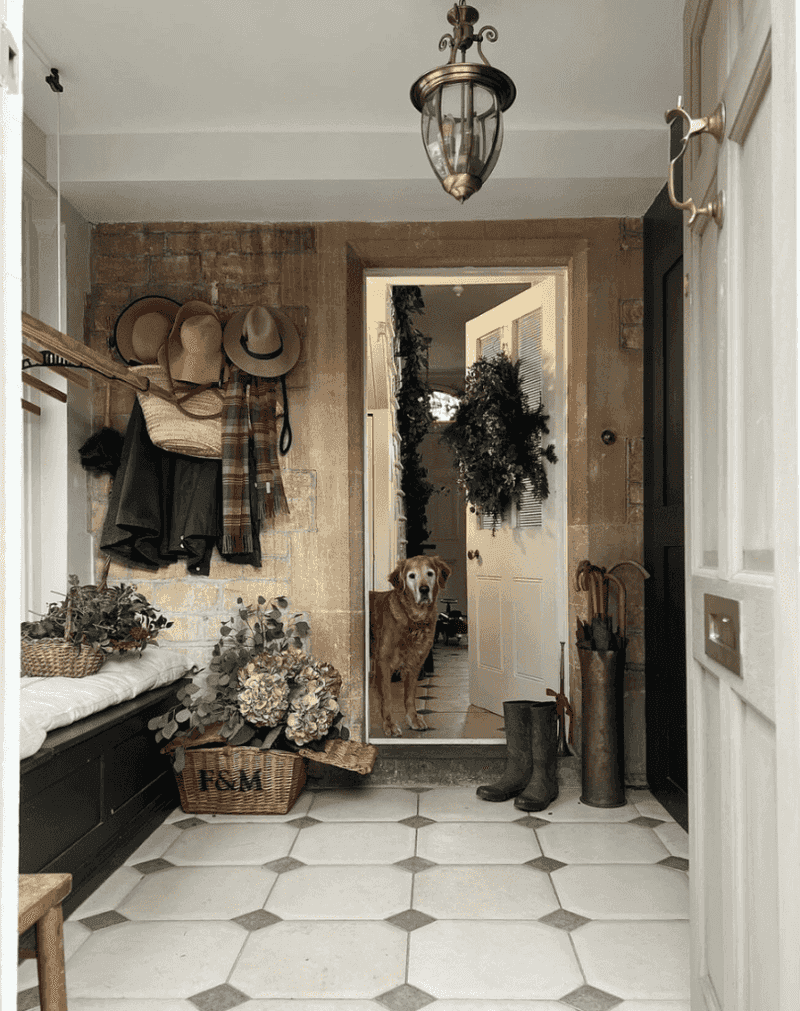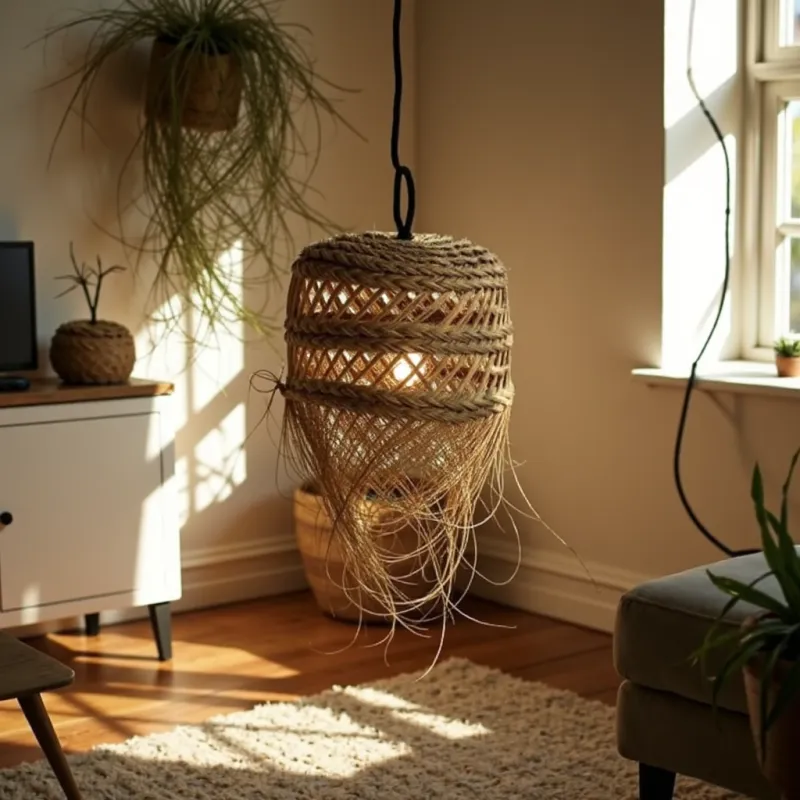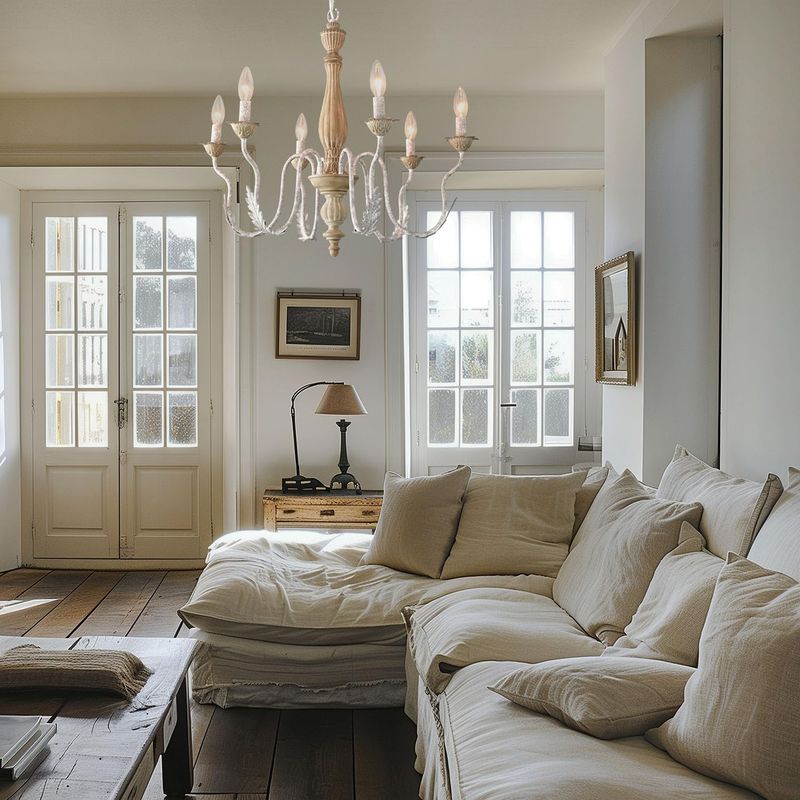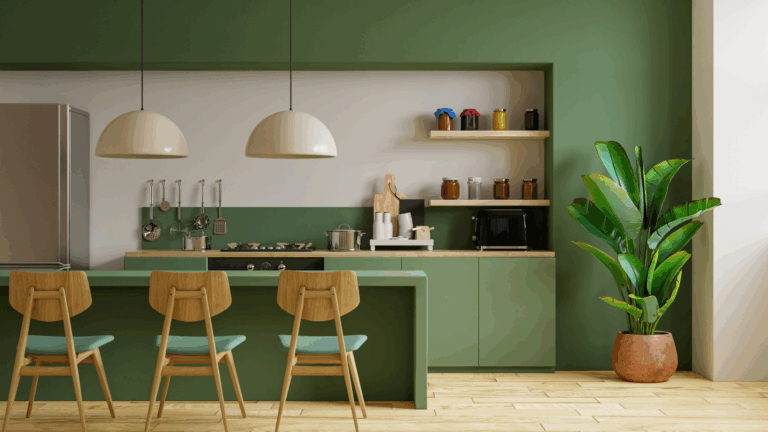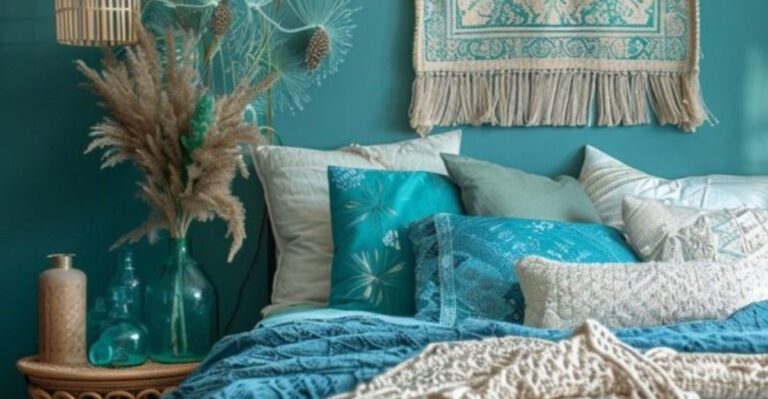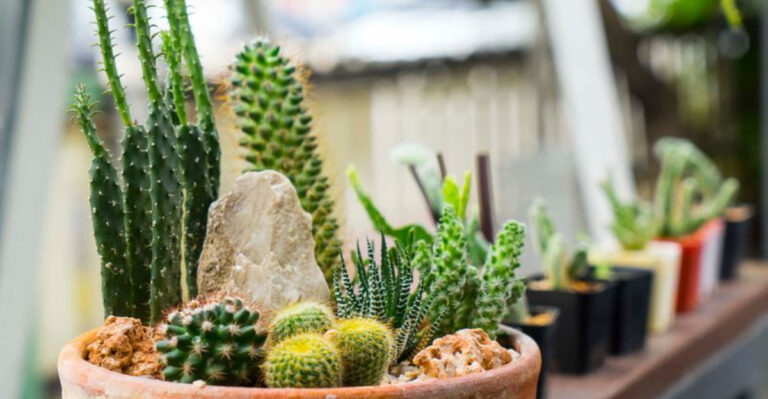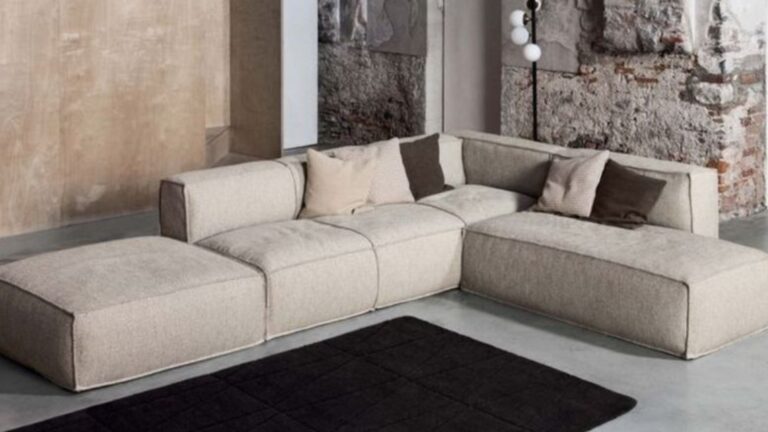19 Ways To Create The Coveted European Cottage Aesthetic No Matter What’s Your House Style
Ever dreamed of living in a charming European cottage surrounded by wildflowers and cobblestone paths?
No, that cozy, timeworn elegance doesn’t require moving across the Atlantic or buying a centuries-old home!
With some thoughtful touches and design know-how, you can bring that sought-after European cottage vibe into any home, whether you’re in a suburban ranch or city apartment.
1. Embrace Imperfection
Forget about sleek, pristine surfaces! The soul of European cottage style lies in embracing the beautiful imperfections that tell a story. Look for furniture with gentle wear, patina on metals, and weathered wood that shows its age gracefully.
When shopping, resist items that appear too perfect or mass-produced. That slightly uneven handmade ceramic bowl or the antique table with visible repairs carries the authentic character that makes European cottages so appealing.
2. Layer Natural Textiles
Nothing says European cottage quite like an abundance of natural fabrics scattered throughout your home. Mix linen, cotton, and wool in complementary but not matching tones for that collected-over-time feeling.
Casually drape a chunky knit throw over your sofa arm, layer different pillow textures, and don’t forget those billowy linen curtains that catch the breeze. The slightly rumpled look of unwashed linen particularly captures that effortless European charm many designers try to replicate.
3. Install Wood Beams
Those gorgeous exposed beams you spot in every European cottage Pinterest board? They’re not just structural—they’re transformational. Even in newer homes, adding reclaimed wooden beams to ceilings creates instant age and architectural interest.
Can’t manage real structural beams? Hollow box beams crafted from reclaimed wood offer the same visual impact for less weight and cost. The rich patina and irregular character of old wood instantly transports any space to the French countryside or English meadows.
4. Incorporate Vintage Finds
Weekend flea markets hold the secret ingredients to authentic European cottage style! Hunt for those one-of-a-kind pieces that whisper stories of the past—copper cookware with that gorgeous verdigris patina, handwoven baskets, or oil paintings in ornate frames.
Mix these treasures among your everyday items rather than creating museum-like displays. A vintage bread board leaning against your backsplash or antique pitchers holding fresh flowers bring that collected-over-generations feel that defines European cottage homes.
5. Choose a Muted Color Palette
Vibrant primary colors rarely make an appearance in authentic European cottages. Instead, gravitate toward colors that feel gently faded by time and sunshine—soft whites, creamy beiges, dusty blues, and sage greens create that serene, timeworn atmosphere.
Look to nature for inspiration: the pale green of lichen, the warm beige of weathered stone, or the soft blue of distant hills. These subtle hues create a harmonious backdrop that allows textural elements to shine while maintaining that peaceful cottage ambiance.
6. Add Plaster Wall Texture
Smooth, perfect drywall screams modern construction, while textured plaster walls whisper European heritage. Fortunately, you can achieve this look without a complete renovation using specialized lime-based plaster finishes or textured paint techniques.
The subtle undulations catch light beautifully throughout the day, creating that soft, dimensional quality you see in centuries-old cottages.
7. Install a Farmhouse Sink
That deep, wide basin isn’t just practical – it’s practically iconic in European cottage kitchens! Whether you choose classic white fireclay, weathered copper, or natural stone, a farmhouse sink instantly evokes rural European charm.
What makes this element so special is how it breaks the continuous line of countertops, boldly announcing itself as a focal point. The exposed front apron provides that perfect touch of utilitarian beauty that European cottages balance so effortlessly.
8. Create a Cozy Reading Nook
Picture yourself curled up with a good book while rain patters against windowpanes—this quintessential cottage moment deserves its own dedicated space! Carve out a window nook with a cushioned bench, plenty of pillows, and a small side table for tea.
The charm lies in creating a sense of enclosure and comfort. Add a small bookshelf nearby filled with beloved volumes, and perhaps a throw blanket in a natural textile.
9. Use Open Shelving
Forget hiding everything behind cabinet doors! European cottage kitchens celebrate everyday beauty through thoughtfully arranged open shelving. Display your collection of earthenware plates, handmade pottery mugs, and glass jars filled with pantry staples.
The key is curating without overcrowding. Leave breathing room between objects and group similar items together. Those perfectly imperfect stacks of mismatched plates and bowls create that lived-in, generations-old feeling that defines authentic cottage style.
10. Incorporate Botanical Elements
Imagine walking into a French country home—what do you notice? Likely those casual arrangements of garden flowers and herbs that bring the outdoors in! Skip perfect florist arrangements in favor of loosely gathered blooms in simple pitchers or mason jars.
Beyond fresh flowers, botanical prints in simple frames, potted herbs on windowsills, and even dried lavender bundles hanging in the kitchen all contribute to that garden-connected feeling.
11. Install Rustic Flooring
Those perfectly polished floors have no place in a European cottage! Instead, look for materials with character and age—wide plank wooden boards, reclaimed terracotta tiles, or natural stone with irregular edges and surfaces.
The beauty lies in the variations and imperfections. Slightly uneven wooden planks that creak underfoot or terracotta tiles with subtle color differences create that authentic, centuries-old feeling.
12. Add Charming Window Treatments
Heavy, formal draperies? Not in a European cottage! Instead, embrace simple, functional window coverings that allow plenty of natural light. Think airy linen café curtains that flutter in the breeze or simple Roman shades in natural fabrics.
The magic happens when you keep the treatments minimal enough to frame the view without overwhelming it. Many European cottages feature windows with divided panes, so if your home has plain windows, consider adding faux mullions for that classic cottage look.
13. Mix Old and New Furniture
Authentic European cottages weren’t decorated all at once—they evolved over generations! Capture this organic feeling by mixing carefully chosen antique pieces with more contemporary items that share similar lines or materials.
An antique farmhouse table paired with modern, simple chairs creates that perfect tension between old and new. The most important rule? Nothing should match too perfectly. The comfortable, collected-over-time approach is what gives European cottages their soulful, lived-in appeal.
14. Create a Welcoming Entryway
First impressions matter! European cottage entryways invite you in with practical charm—a place for muddy boots, garden hats, and everyday coats.
Even in small spaces, a simple wall hook, bench, and basket can create this functional welcome zone. Look for pieces with character rather than matching sets.
15. Decorate with Handcrafted Items
Mass-produced decor has no place in a European cottage! Seek out pieces made by human hands—handwoven baskets, pottery thrown on a wheel, hand-stitched quilts, and carved wooden utensils bring authentic character no factory can replicate.
These items carry the subtle irregularities that make them special. Supporting local artisans not only adds unique pieces to your home but connects you to the tradition of craftsmanship that European cottages have always valued.
16. Incorporate Antique Lighting
Banish those builder-grade fixtures! Few elements transform a space like characterful lighting with history and patina. Hunt for antique brass sconces, iron chandeliers with a rustic finish, or vintage table lamps with ceramic or glass bases.
Don’t worry about perfect matching—European cottages evolved over time, accumulating lighting from different eras. For a truly authentic touch, look for fixtures that have been converted from oil lamps or candle holders.
17. Create a Herb Garden Window
Europeans have been growing kitchen herbs on windowsills for centuries! This practical tradition brings fragrance, flavor, and that quintessential cottage connection to nature right into your home. Choose a sunny window and arrange terracotta pots of basil, thyme, rosemary, and mint.
Beyond their culinary uses, these little green companions bring life and subtle movement as they reach toward the sunlight.
18. Display Collections Thoughtfully
European cottages often feature charming collections gathered over time—copper cookware, blue and white pottery, or vintage kitchen tools. The key is displaying these treasures in a way that feels natural rather than museum-like.
Group similar items together but avoid perfect symmetry. Allow your collections to appear as though they accumulated naturally over generations.
19. Choose Furniture with Curves
Angular, boxy furniture belongs in modern spaces—European cottages celebrate the gentle curves and organic shapes of traditional craftsmanship. Look for tables with cabriole legs, chairs with rounded backs, and sofas with softly rolled arms.
These curved elements bring a sense of history and handcrafted quality. Even simple pieces gain character through subtle details like turned legs or scalloped edges. The softness of these forms creates a welcoming atmosphere that invites you to relax and linger.



